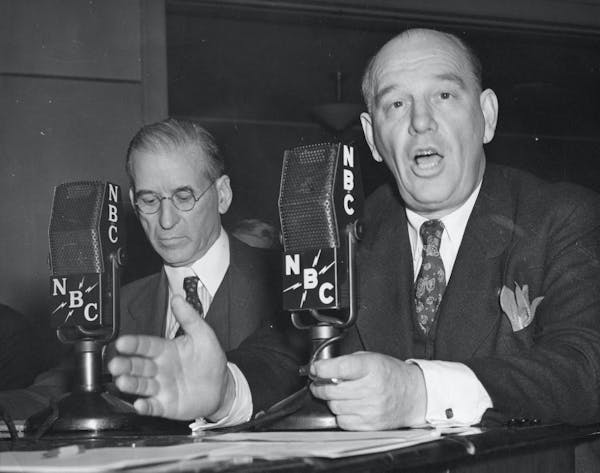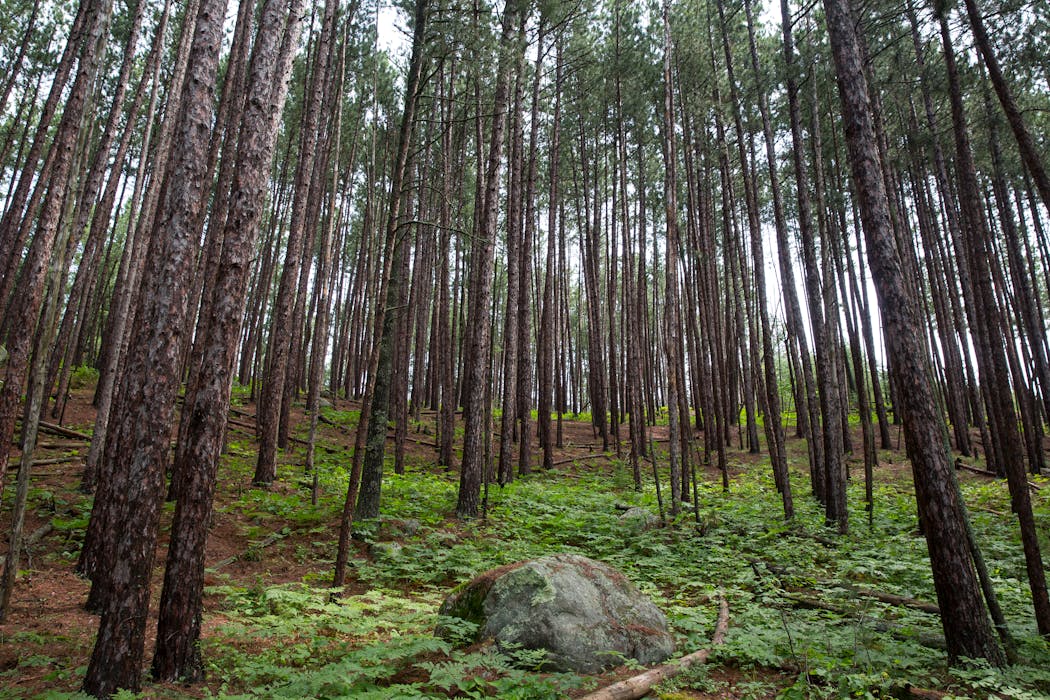Does Minnesota have more forests than its neighbors?
Listen and subscribe to our podcast: Via Apple Podcasts | Spotify | Stitcher
Minnesota's immense pine forests once made it a lumber milling giant and remain a celebrated element of the state's landscape. But how do our forests stack up against our neighbors?
Reader Charlie Corcoran, a Stillwater resident who teaches finance at the University of Wisconsin–River Falls, wanted to know how much of Minnesota is covered by forests — and how we rank against surrounding states. He submitted the question to Curious Minnesota, the Star Tribune's reader-powered reporting project.
Corcoran suspects he already knows the answer.
"There's a perception that Minnesota is full of forests. But it's really not," Corcoran said. "You're in a prairie."
Forests cover about a third of Minnesota — about 17.6 million acres, to be precise — according to data from the U.S. Forest Service.
Minnesota is the second-most forested state among its surrounding neighbors, according to a Star Tribune analysis of U.S. Forest Service data. Wisconsin leads the pack, with 47% of that state covered by forestland. Iowa, South Dakota and North Dakota are all largely unforested.
Second place may not seem so bad. But how does Minnesota match against the entire Midwest?
It's hard to compete with Michigan, which is half forestland. And Missouri's forests cover more than a third of the state. But Minnesota manages to stay in the upper ranks at a solid fourth place.
It turns out Minnesota isn't very forested when compared with the rest of the United States, however. It ranks in the lower half. New England states like Maine and New Hampshire are roughly 80% forestland.
Minnesota also lags behind the 50-state median of 40% coverage. Looking at the entire country, slightly more than a third of the United States (and its territories) are forested.
A historical decline
Minnesota's landscape looks far different than it did a century ago.
White settlers were initially drawn to Minnesota for its timber, and lumber barons coerced local Native Americans to sell off their forested lands, according to the Minnesota Historical Society.
An estimated 32 million acres of forests stretched across Minnesota before European settlement, covering about half the state. By the 1930s, the lumber trade and other human development had slashed Minnesota's forested area down to 19.6 million acres, a decline that continued into the 1970s before it stabilized and started bouncing back.
"The loss represents land converted into agriculture, cities, highways and other activities," said Lee Frelich, director of the Center for Forest Ecology at the University of Minnesota. Some abandoned plots returned to forests in northern Minnesota, he said, since farming attempts were challenged by rocky terrain and short growing seasons.
But there is good news. Minnesota's forest coverage actually increased by 200,000 acres — or 1.4% — between 2013 and 2018, according to recent reports.
A combination of trends including private landowners selling off property, the rise of precision agriculture and the reclamation of farmland into forests has contributed to that growth, said Jon Drimel, timber program supervisor for the Minnesota Department of Natural Resources.
"It's been a continued increase," he said. "All these little things are adding together."
A map of forested land in Minnesota's counties closely follows the geographic gradients of the state's biomes and ecological regions. Prairie grasslands covering Minnesota's western edge mostly lack forests. A swath of deciduous forests cuts diagonally across the state, not as dense as the North Woods spreading toward Lake Superior.
Minnesota's forests are aging, increasing their vulnerability to bugs, disease, weather and other threats, according to recent Forest Service reports.
Yet trees in Minnesota's forests are also a diverse blend. Roughly a quarter of Minnesota's trees are aspen and birch. A third are softwoods like spruces, pines and firs. Another 40% are hardwoods like maples and oaks.
Nearly half of the state's forests are actually privately owned. Only 39% are managed by state and local governments, with the federal government overseeing the remaining 17%.
Drimel described this as "a checkerboard of ownership patterns" that combined with vast tree diversity make the state's forestland resilient against any single pressure.
But a changing global climate may pose a significant threat to Minnesota's forests in the coming decades.
Minnesota could become a forest-less prairie or retain most of its forestland, depending upon levels of CO2 emissions in the atmosphere by 2070, according to future climate change scenarios.
Frelich said carbon emissions would need to decrease significantly well before 2070 to avoid the worst climate consequences for Minnesota forests.
"The choices for the future between a high or low emissions scenario are vastly different," he said. "Either we become Kansas or we stay mostly the same as now."
If you'd like to submit a Curious Minnesota question, fill out the form below:
Read more Curious Minnesota stories:
Is Minnesota's tiny Lake Itasca the true source of the Mississippi River?
Has Minnesota ever had a major earthquake?
Why do inland cities like St. Paul have so many seagulls?
When did wild bison disappear from Minnesota?
How lumberjacks harnessed an 'ocean of pine' to build Minnesota
Does water really only flow out of Minnesota — not into it?





